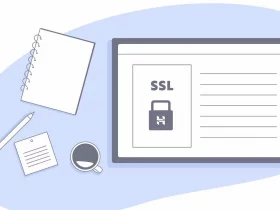A lot of work goes into your website, doesn’t it? Web design, content, SEO optimization, performance tweaks—all of these get due attention. But what about security?
Over 30,000 websites are hacked every day, according to the latest Global Website Hacking Statistics compiled by the IBM Community. Many of the affected website owners never thought it would happen to them.
Don’t make the same mistake. Here are some simple but effective ways to protect your website from cyber attacks.
Use Secure Web Protocols
This is a big must, especially if your website features user accounts, forms, or handles online transactions.
A major security update over the HTTP protocol, HTTPS helps prevent hackers from intercepting data in transit. This protocol goes hand in hand with a Secure Sockets Layer (SSL), another site protocol. SSL encrypts information passed between the site and a user’s web browser.
HTTPS and SSL have become the norms on the internet. Security-aware netizens may simply avoid using a website that doesn’t use them.
Use a Password Generator for Better Data Safety
Whether you manage your website yourself or have an administrator, you need to use a safe password. And you need to change this password regularly to reduce security risks.
Complex passwords can be a hassle to remember. Using a password generator makes creating, storing, updating, and managing complex passwords a quick and intuitive process. It can help you reduce security vulnerabilities and safeguard administrator accounts related to your website.
It can also encourage people who have access to your site’s backend to frequently update their passwords.
Companies often reach out to the MDR security linked here to have access to both these tools and experts who can help you take your security posture to the next level. What’s more, these tools are readily available for use by the public.
Guard Your CMS Against Automated Attacks
Automated attacks use bots to take advantage of default settings in popular content management systems (CMSs) like WordPress.
Once you set up your website, you want to change file and user permissions. Only users who need to change file contents or run scripts should be able to do so. Refer to your CMS manual for how to do this.
Keep Your CMS, Plugins, and Extensions Updated
Cyber attacks frequently take advantage of unpatched errors in the software or plugins. That’s why you want to enable automatic updates as soon as these are available. And to regularly check that all the software that powers your site is up to date.
Also important is to limit the number of plugins and extensions you use to essential ones. Make sure they come from a trustworthy source—the official plugin directory of your CMS.
Use a Vulnerability Scanner
Even well-built websites can have weak spots that make them vulnerable to XSS attacks and SQL injections.
It’s good to run your website through a vulnerability scanner regularly to recognize potential entryways for hackers.
These scanners can cover a lot of ground, from outdated plugins to theme flaws to configuration vulnerabilities.
Restrict File Uploading to Your Site
Malware often makes its way to a website through file uploads. A safe strategy is to have a strict file uploading policy, allowing only authorized users to send uploads.
You also want to implement a virus and malware scanner for uploads. All uploads should pass through this scanner before reaching your website.
Backup Your Website Automatically
Having at least two backup solutions in place brings you peace of mind if security incidents arise. You don’t want to store your backups on the same server as your site, as that increases vulnerabilities.
Cloud backups are convenient and can store your site data across locations to minimize risks. Choose solutions like Cloudally, that let you schedule backups and enable you quickly perform recoveries if needed.
Choose a Safe Web Host
At the end of the day, your website is only as safe as your web host. When researching web hosts, look beyond price and features at their security history. Have they been involved in any data leaks? Been compromised by hackers? Do they take their customers’ security seriously?
Increase Network Security
Setting logins to expire after a short period and scanning devices plugged into the network are two safe strategies. These will help prevent cyber attackers from exploiting security lapses on your local network.
Use a Web Application Firewall (WAP)
Lastly, consider using a WAP to stand between your data connection and website server. Based in the cloud, WAFs can be very effective at filtering spammers and unwanted traffic. They can effectively block cyber attacks before they have a chance to hurt your website.
In the end, implement these security measures one at a time. And remember that tightening your website’s security isn’t something you do once and then forget about. It calls for regular reviews and a proactive approach.











